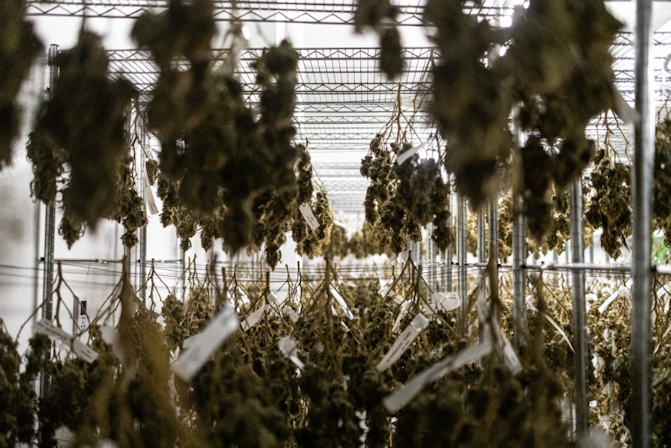
Photo by DANIEL FARÒ
What Changes Will 2025 Bring For Cannabis Advertising On Google?
Understanding the evolution of Google's cannabis advertising regulations
It is difficult to predict exactly what changes the whole of 2025 will bring for cannabis advertising on Google, as the company’s policies and guidelines are subject to constant change.
In fact, Google has been known for having a very strict policy regarding cannabis advertising, making it almost impossible for any company in the industry to advertise through paid media, having to resort to organic advertising.
However, Google has started the year following the other global trends towards cannabis legalization and regulation, and as a result, Google has relaxed its restrictions a bit.
Is Cannabis Advertising Allowed On Google?

Photo By OGEN Cannabis / Instagram
As you may already know or found out the hard way. Google does not allow ads that promote consumption, sale, or even provide informational content about cannabis.
It doesn’t matter if it’s medicinal or recreational, the tech beast makes no distinctions and lumps it all in as a recreational drug in its Advertising Policy.
Although many companies have gotten around Google’s cleverness and have managed to do some paid advertising, most of the time they end up pulling down the ads and getting in trouble with the regulation.
To appear in the first results of Google search, the best option is to opt for organic growth focused on SEO.
Current Regulation

As part of its easing of current regulations, Google Ads will no longer ban all paid advertising for hemp and CBD in California, Colorado, and Puerto Rico, but there will still be limitations for advertisers.
As of January of this year, the ban will be lifted on Google’s regulation for:
FDA-approved pharmaceutical products containing CBD.
Hemp-derived topical CBD products with less than 0.3% THC.
Companies marketing topical CBD products must be LegitScript certified, which involves submitting the products to laboratory testing and providing a third-party Certificate of Analysis. Google must also certify the company.
The revised policy will allow vendors to market topical products, such as creams and other beauty products; prescription medications containing CBD that are FDA-approved; and other products that cannot be ingested, such as candles and bath bombs.
However, it should be remembered, Google still does not allow ads that promote consumption, sale, or provide information about cannabis.
Any mention of cannabis-related terms such as marijuana, weed, cannabis, rolling papers, or dispensaries will trigger Google’s advertising policies and lower ads or even impose penalties.
Despite Google’s policies, cannabis companies have discovered some loopholes for placing digital ads by avoiding language containing cannabis-related terms in ad copy or on websites, although the tech giant often can’t be fooled.
How To Advertise Cannabis On Google Today?
One of the best ways to appear in Google’s top search results is through organic SEO, that is using search engine optimization for cannabis websites focused on organic and targeted growth.
Using organic means such as email, SEO, and public relations to drive traffic to your website is one of the best and most practical ways to show up in Google.
The good thing about organic digital marketing is that it makes you grow organically and allows you to have more direct contact with your target audience, although it takes work, time, and dedication.
Another option is to use the strategies that many cannabis companies have employed, although this may result in some penalties from Google or in having your ads downgraded.
There are three things you need to submit an ad to Google:
Ad copy.
A landing page.
A list of keywords to bid on.
The trick to getting your ads approved is to bid on keywords related to cannabis but avoid using them in the ad text and on the web page.
But not everything is as easy as it seems, companies that cheat the algorithm can suffer consequences if caught. Google may disapprove your ad, reduce your visibility if approved and, if it persists, Google may suspend your account altogether.
You should also be careful, both techniques are not compatible. Usually, you cannot rank organically with SEO and run Google ads at the same time, as the two means contradict each other.
What Changes Will There Be In 2025?
The main novelty for this year -which has been known so far- is the lifting of CBD and hemp as banned substances in Google’s regulatory policies
Although it is still a pilot model, and certain restrictions remain in place to allow advertising, it is a small step toward regulation in favor of cannabis.
This begins to open the door to allow advertising of cannabis, although there is still a long way to go, we are optimistic that Google will allow in the near future paid advertising of cannabis and its derivatives, allowing companies to grow and reach more people.
Herb Recommended Products:
READ MORE










